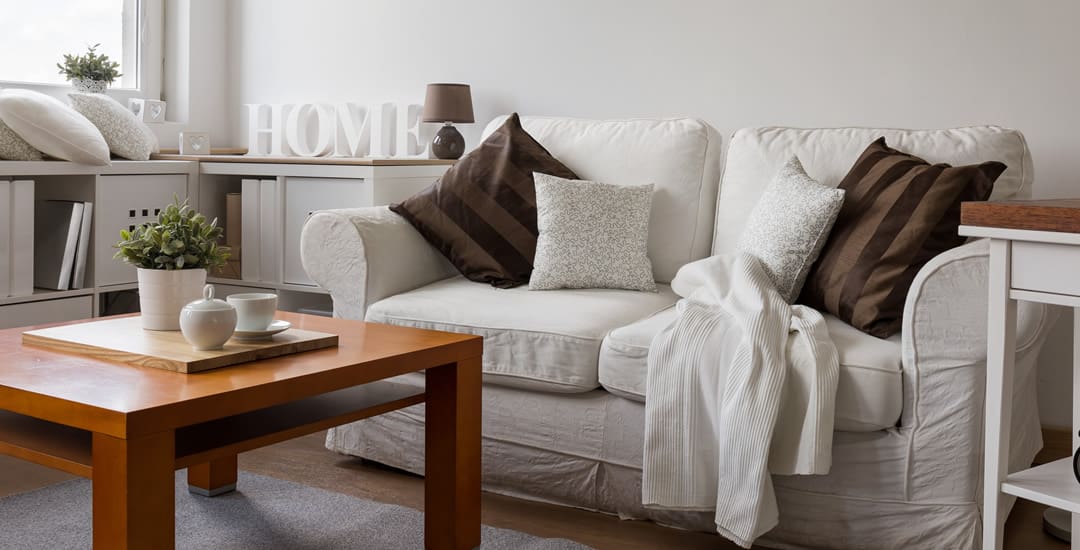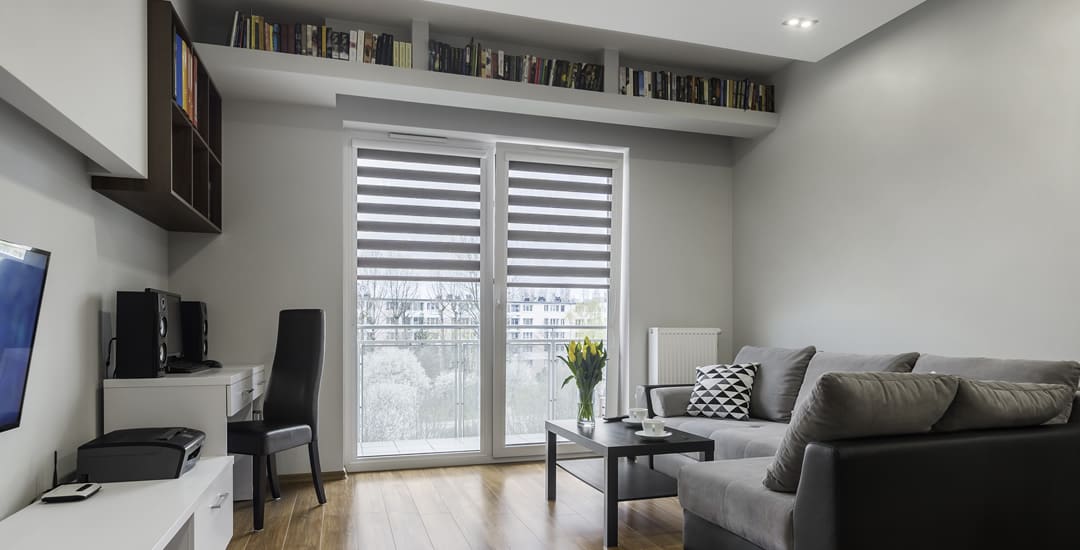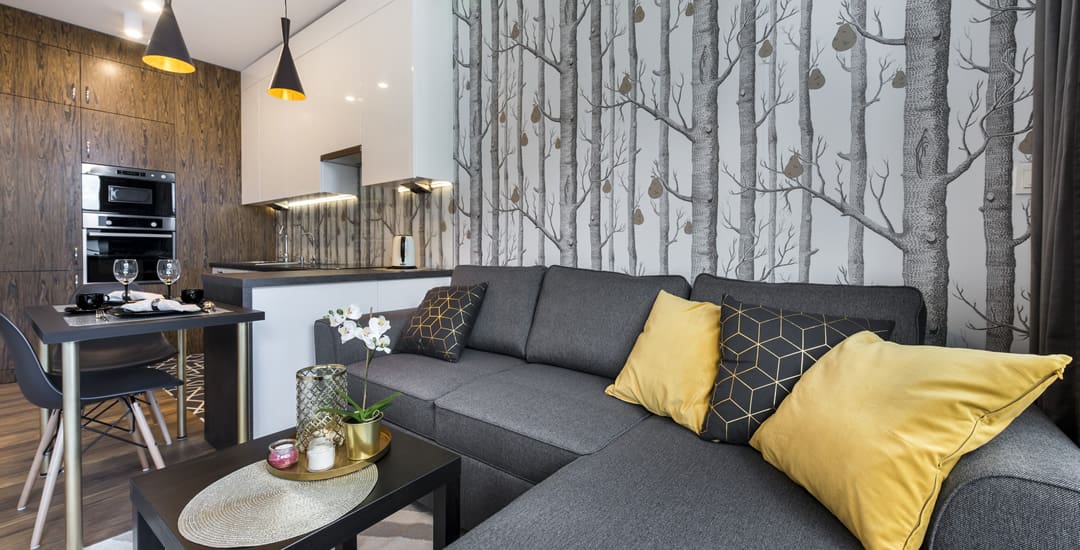
How do interior designers make a small house look good? This comes down to a combination of making clever use of the space available, whilst avoiding cluttering it up or making it look too “busy” or jumbled. Many people assume that small house interior design solutions are exclusively concerned with making the space look or feel larger than it really is; which is why so many owners of small homes run into problems trying to style or revamp their own homes.
The small house interior design ideas that work are those that make the best use of the available space, and this includes using methods to open it up visually where this is possible and desirable. However, small house interior designers know that the key to success is vitally to recognise, accept, and celebrate the compact nature of the space, and to show this off as a positive feature by highlighting the aspects of this that the homeowner values most, be that its cosiness, warmth, minimalism, or sheer ingenuity!
This blog post will talk about how interior designers make small houses look good and in some cases, look bigger, without losing the upsides of the smallness of the space. This basic info should then give you a good grounding in the sort of approach you might want to take to decorate or revamp your small home yourself, without the need to hire someone in to advise you.
How do interior designers make a small house look good whilst celebrating the space?

As I mentioned above, many folk looking for small house interior design solutions fall at the first hurdle by trying to make their happy meal look like a supersize, fooling exactly no one and also giving the happy meal a complex for absolutely no good reason.
So, how do interior designers make a small house look good whilst celebrating the space as opposed to pretending that it’s something that it’s not?
There are tonnes of things I could suggest here, but they all fall into a few broader headers, so I’ll just point you towards those instead. Celebrating a small space means turning it into a feature; putting it to work in such a way that it both looks good, and is functional.
Rooms, spaces, and things that work on two levels or that can perform two roles is an integral part of this. Think of a desk-come-dining table, using screens, partitions, and voiles to divide up or open up spaces, and using all of the available space without cluttering it.
That small nook that’s a little low for most things can make for a great book storage space, or to place a comfortable chair or low stool.
Fold-out furniture is a game-changer too; tables that fold flat against the wall, and even roll-out or foldaway beds, Murphy beds, and so on.
If you have the funds, custom or fitted furniture can be excellent too, allowing you to say, build in wardrobes or make the best use of awkward angles or corners by giving them a job instead of staring balefully at them because they aren’t pulling their weight.
Clever storage solutions can become a feature in their own right; also, think about the space you have going upwards too. Unless you have very low ceilings, hanging items like lights, plants, and even shelves can both provide space and look good.
How do interior designers make a small house look bigger?

As I mentioned earlier on, making a small house look good doesn’t mean trying to deny the fact it’s little. This is obviously a hiding to nowhere; but there’s a difference between “small” and “pokey,” and for some areas or spaces, the difference between the two relies on the clever use of accessories or décor to open the space up or give it the impression of being roomier than it is.
So, how do interior designers make a small house look bigger? First up, using lighter colours tends to help here, as can working with stripes or an ombre or graduated colour effect, to draw the eyes and add interest that diverts from what otherwise might be the initial thought that “this is really dinky!”
You can “open up” a space by using mirrors to give the impression of there being more room than there is, and a lot of light of the right type, as well as windows and even glass accessories (clear vases/fruit bowls, rather than opaque ones) can help too.
The other obvious important point is to avoid making the space look smaller still, which can happen inadvertently if you add things that encroach further into the room.
For instance, when it comes to your window dressings, choose blinds rather than curtains. Hang the blinds within the window recess rather than over it; and pick blinds that have a small profile when open, to avoid them from taking up space and/or occluding some of the natural light.
The best blinds for small houses that tick all of these boxes are roller blinds, day and night blinds, and aluminium Venetian blinds; these are the three types that take up the least space.
How do interior designers make a small house look good on a budget?

If you don’t have the funds for an interior designer (and most people don’t!) You may well be looking to keep costs down in other ways too. Hence the question “how do interior designers make a small house look good on a budget?”
First of all, a small house means a limit to the things you can have in there/bring in, without losing space or functionality or making the place look cluttered. This is an advantage in some ways, as it forces you to be a bit choosier about what you do get or buy. And if you’re buying fewer things as a result of this, you can potentially spend more on each of them.
Some of the cheapest ways to make a small house look good on a budget include repainting your walls to a lighter, brighter colour, and changing your window dressings for blinds in a lighter shade too. If you currently have curtains or blinds that take up a lot of room, choosing blinds of a different style than your current offerings is wise. Roller blinds, by the way, are the cheapest type of blinds of all, and made-to-measure roller blinds cost a lot less than most people expect.
Buying second hand, vintage, upcycled and so on is always viable; what’s kind of ironic here is that people with megabucks do the same thing because this is both eco-friendly and cool, and way more interesting than buying mass-produced new stuff, which means that those who could easily afford other options often end up competing for swag with those who probably could not.
On the flipside of that, it does also mean that if you’re not already an avid charity shop shopper/eBayer/thrifter, you should not be put off in any way by thinking that charity shop shopping or buying goods second hand is somehow second class.
Junk shops/flea markets/second hand sales (or as my father who is in the trade likes to call them, “heirloom emporiums, vintage bazaars, and antiques auctions”) are fantastic places to look too, and browsing places like these can also be really entertaining and rewarding, and in the case of auctions/sales, quite the buzz as well!
That will hopefully get you started; and if you’ve got any more tips on making small houses look good or insider info on how interior designers style more compact homes, please tell me/show me pics in the comments!




